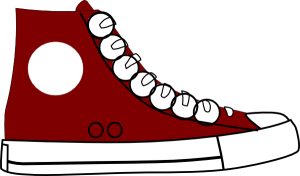Consumer expectations about athletic footwear rise every year. Athletic footwear sales rise very year too.
True, consumer expectations (+15% for the category in 2014) rise faster than actual sales levels (+5%), but that’s they way it is with expectations. Sure, there are some cyclical bumps for athletic footwear (back-to-school, when “official” sports seasons kick-off, when a brand signs a new celebrity), but growth in the category has been fairly consistent over the past decade.
So too have consumer engagement ratings of the main brands in the category. But to truly understand why the brands get ranked as they do by their customers you need to understand the critical drivers for a category like Athletic Footwear.
What’s the least-important driver? “Range of Athletic Shoe Types.” Why? Every brand pretty much has shoes for pretty much any athletic challenge you can think of. Driver #3 has to do with “Customization” – and the ability to make a shoe truly you own – a value that‘s fast made it’s way into everything from athletic shoes to fast-casual food. That driver is preceded by “Personal Innovation and Performance Optimization,” because you just know that the right equipment for you will help you perform better. And the first-most important driver of engagement is “Brand Value and Empowered Design.” That means what the brand stands for in the mind of the consumer will make an added-value contribution to engagement, purchase and loyalty.
New Balance and Nike were #1 in our 2015 Customer Loyalty Engagement Index, followed by
- Skechers,
- Reebok,
- Adidas,
- Mizuno,
- Under Armour,
- Asics,
- Fila, and
- Brooks
If you understand the four drivers of engagement and attendant loyalty, where the brands end up being ranked tend to be self-evident. As could profitability, if brands competing in the athletic footwear category – actually, any category – did that too. Unfortunately, most don’t.
Adidas, perennially at the middle of our list in good years and sometimes closer to the bottom of the list in bad years, has announced they are going to address their problems in the United States market. Adidas CEO Herbert Hainer declared that the company is going to turn the brand around in the United States, which has been a bunion on the brand’s profit statement for a while now. Mr. Hainer declared that the Adidas North American division will be profitable by year-end, so no small task.
Sure, everyone knows the Adidas name, but as it is written in the Marketer’s Bible, “awareness doth not guarantee share, sales, or profitability.” Forty years ago, perhaps, but not in today’s marketplace, which moves at the speed of consumer values, which is why Adidas – down 7% in 2014 – lags behind Nike and newcomer to our list, Under Armour in U.S. retail and apparel sales.
So Adidas is doing stuff. They moved their head of design to U.S. HQ in Portland, OR. They have a new U.S. President. They hired 3 top designers from Nike, and they’re looking at creating buzz and brand engagement à la relationship/sponsorship deals with the likes of Derrick Rose, Kanye West, and Pharrell Williams, even going so far as to equate some recent sales increases to all these shifts, although it’s probably too soon to actually know any of the same-old, same-old is really working or it’s just Summer back-to-camp sales.
It’s not, however, too soon to keep in mind another Biblically-related quote. “The race is not always to the swift, nor the battle to the strong, but that’s the way to bet – particularly when you’re dealing with customer expectations!”
Find out more about what makes customer loyalty happen and how Brand Keys metrics is able to predict future consumer behavior: brandkeys.com. Visit our YouTube channel to learn more about Brand Keys methodology, applications and case studies.
Share this:
